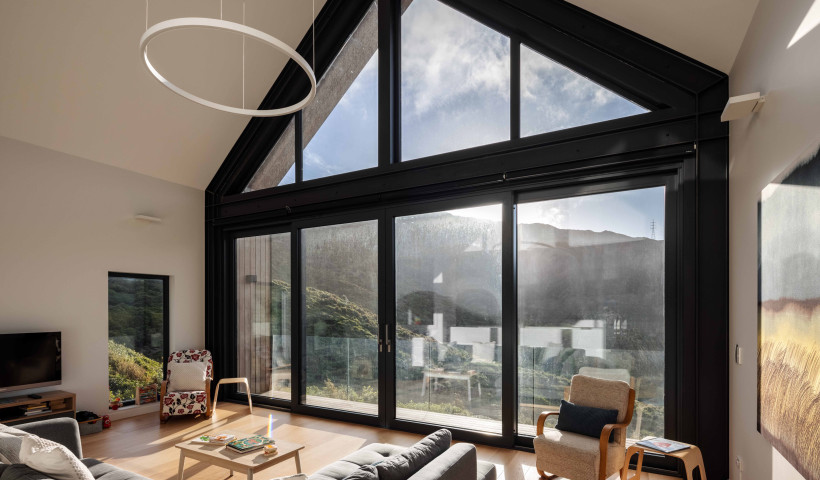
Let insulation perform
If H1 is a minimum level of compliance to ensure a design is legal, before the cost of thicker walls is added, Pro Clima suggest that the expectations of 90mm of insulation are quite low because it is not able to perform as well as it could.
This is because insulation is not adequately protected from air movement and this air carries moisture.
R-Value is a measure of thermal resistance, but the test for this number is based on lab conditions — no air movement. This is far from the case in real life where three energy movements are occurring: conduction, convection and radiation.
Designers could simply increase insulation thickness. This sounds sensible however it doesn't gain mastery over air movement (convection) or resolve the problem with internal moisture creating interstitial condensation. The Barrett Report offers a summary of what will happen in New Zealand next if this continues to happen.
Windows make better ventilation systems than walls
Air pressure pushes from inside the building toward the outside in winter conditions (warm towards cold). Air moves through all holes and cracks — whether they be gaps around windows, power points, or gaps around skirting. Air carries moisture into the insulation cavity. In a new build there is a much lower drying potential because the insulation slows air movement — if there is no insulation in the way the drying potential is high due to free air movement.
Prevention is better than cure
Adding a dedicated airtightness layer prevents convective heat loss and risks of interstitial condensation.
The airtight INTELLO is a humidity-variable vapour control layer (VCL), not a vapour barrier or blocker. The simple difference is, INTELLO prevents moisture loading in winter conditions but allows moisture out in summer conditions.
Vapour blockers have been tried before (foil-backed plasterboard) and the theory was OK — for winter. In summer the foil prevented any drying and condensation occurred on the foil. Vapour barriers (polyethylene sheet) will give the same result as foil.
Three woolly hats but no jacket
One option is to keep the levels of insulation in walls and ceilings equal: the temperatures are the same in both situations.
A skillion roof is just a wall tipped over on an angle, and will perform just as well as long as designers eliminate the 25mm air gap between insulation with use of a non-porous roof underlay.
The next challenge for skillion roofs is interstitial condensation and this can be resolved/avoided with the INTELLO V.C.L. on the inside face of the insulation. There is a world-wide insurance-backed guarantee of performance on this. Again, it prevents significant amounts of moisture from moving toward the dew point which is approximately in the middle of the insulation in winter conditions.
Efficient thermal envelopes don't bleed heat
It is not possible to achieve useful levels of airtightness from external products (RAB, windtight membranes) because of the common constructions ie. a wall/roof junction is discontinuous at eaves.
It is also not possible to achieve useful levels of airtightness using plasterboard. Plasterboard is required to be a visual layer, a bracing layer, an air-control layer, a services layer (powerpoints etc). And remain gap-free for the lifetime of the building. It doesn't seem possible. It's a bit like asking a thermal break in joinery to work while we hang it over the cavity.
Using a dedicated airtightness and vapour control layer like INTELLO provides measurable, reliable airtightness which in turn prevents energy bleeding out of a building. Ventilation can now be controlled using the system built into every house — windows and doors.
Find out more at the pro clima website or call 0800 pro clima.













 Case Studies
Case Studies













 Popular Products from pro clima
Popular Products from pro clima

 Posts by Pro Clima Technical
Posts by Pro Clima Technical
 Most Popular
Most Popular

